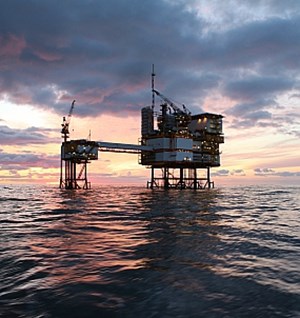Neptune Energy aims to store more carbon than it emits by 2030
Neptune Energy announced its aim to go beyond net zero and store more carbon than is emitted from its operations and the use of its sold products by 2030.
The company is currently progressing two carbon capture and storage (CCS) developments in the Dutch and UK sectors of the North Sea that could see it store more than 9 million tons of carbon dioxide (CO2) emissions per year for third parties by the end of this decade. That would exceed its projected direct emissions (Scope 1) and emissions from the use of its sold products (Scope 3).
Neptune’s aim will be supported by a refreshed strategy, focusing on lower carbon energy production and integrated energy hubs.
- Lower carbon energy production: produce lower carbon gas and oil safely and efficiently
Neptune will focus on electrification where it is economic to do so, and continue to reduce emissions from its operations.
The company will continue to target production in its key producing regions, maintaining its gas-weighted portfolio and lower carbon intensity. New gas and oil developments that are consistent with its lower carbon strategy will be prioritized, along with those that provide opportunities to integrate energy systems.
Given Neptune’s portfolio is lower carbon due to actions taken already, further operational improvements will likely have only a modest impact on Group emissions intensity. Neptune will therefore pursue electrification to decarbonize some of its highest producing assets where it is economic do so and where the regulatory regime is supportive. Consequently, its short-term focus for electrification is in Norway.
By the end of 2022, more than 35 kboepd of Neptune’s net annual production will be electrified. With further projects planned in Norway, the company aims to have around 50 kboepd electrified by 2027.
- Integrated energy hubs: utilize existing infrastructure and capability to integrate energy systems
Neptune’s integrated energy hub strategy provides an opportunity to drive offshore decarbonization, by extending the life of offshore assets and repurposing them to facilitate CO2 storage and hydrogen production, using domestic, lower carbon intensive gas or wind power. By extending field life, electrification could become more economic, helping decarbonize existing production further. This strategy builds on the company’s experience with CCS in the Netherlands and Norway.
Neptune, with its partners, is currently developing the L10 CCS project in the Netherlands, which could store up to 5mt of carbon per year. The company plans to have the project FEED-ready by the end of 2022, with a final investment decision due in 2023. First carbon injection could be in 2026.
Neptune is also pursuing a CCS storage and appraisal license in the UK, and further potential opportunities in the UK and Norway.
Through CCS, Neptune aims to store more carbon for third-party emitters than is emitted from its operations and the use of its sold products by 2030.
At 6kg CO2/boe, the carbon intensity of Neptune’s operated portfolio is already among the lowest in the sector and ahead of the industry average of 15 kg CO2/boe. The methane intensity of its operated production is 0.02%, below the industry average of 0.20% and Neptune remains on target to reach net zero methane emissions by 2030.
“Neptune has one of the lowest carbon intensities in the sector due to the steps we have taken already to reduce operational emissions,” Neptune Energy CEO Pete Jones said. “We have both the infrastructure and the experience with electrification and CCS to now accelerate our ambitions.
Gas will continue to play a crucial role in decarbonization globally, while also being vital for energy security, he said.
“Our gas-weighted portfolio positions us well and we will use this to integrate energy systems, increasing CO2 storage, electrification and hydrogen production, with the aim of storing more carbon than we emit by 2030.”



